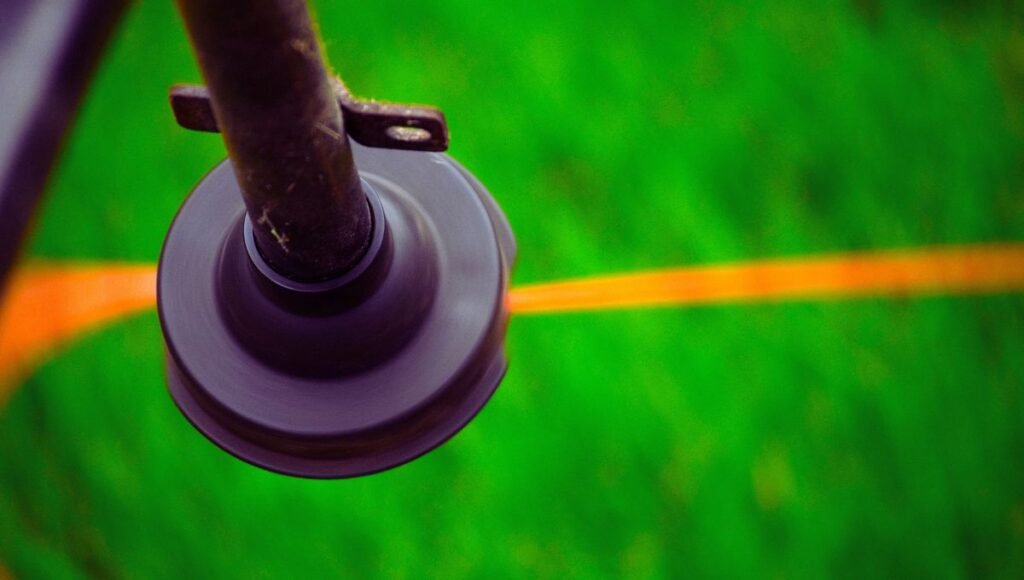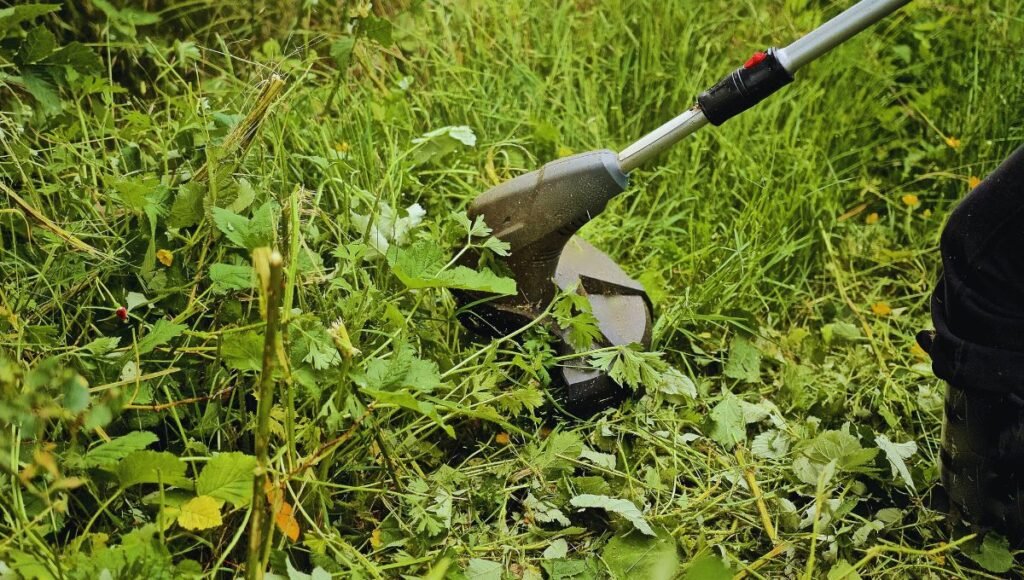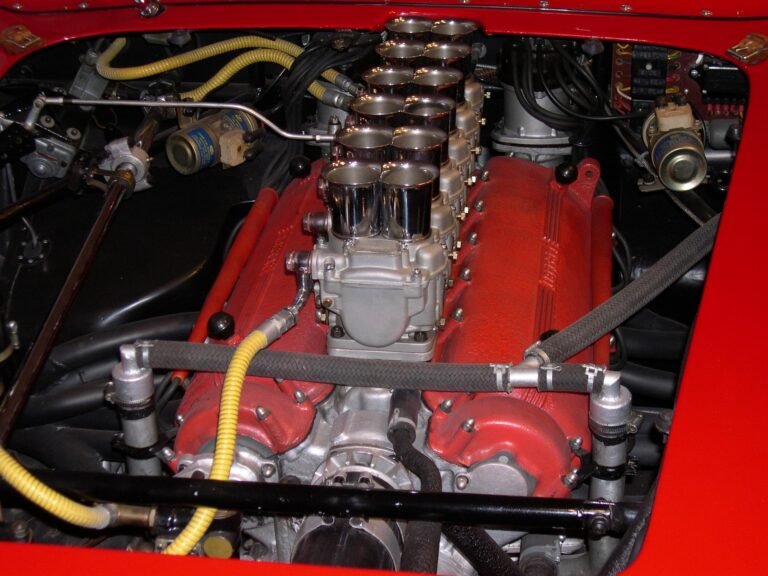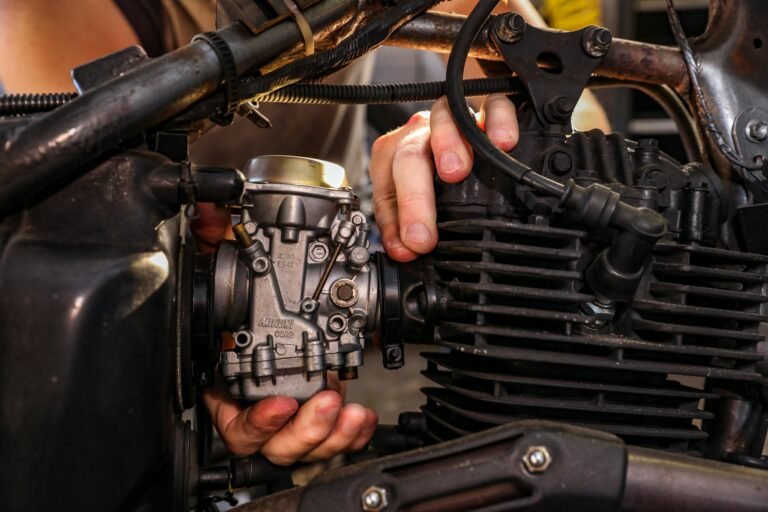How to Adjust a Stihl Weedeater Carburetor: Easy Guide
To adjust a Stihl weedeater carburetor, locate the adjustment screws and turn them to fine-tune the engine’s performance. Consult the user manual for specific screw settings.
A well-maintained weedeater ensures efficient yard work. Adjusting the carburetor is crucial for optimal performance. First, identify the high-speed (H), low-speed (L), and idle (LA) screws on the carburetor. These screws control the fuel and air mixture. Turning them clockwise typically leans the mixture, while counterclockwise enriches it.
Make small adjustments and test the engine after each change. Proper carburetor tuning improves fuel efficiency, prolongs engine life, and ensures smoother operation. Always consult the manual for specific instructions and safety precautions. Regular maintenance keeps your Stihl weedeater running at its best.

Introduction To Stihl Weedeater Carburetor Tuning
Understanding how to adjust a Stihl weedeater carburetor is crucial. Proper tuning ensures your weedeater runs smoothly and efficiently. This guide will help you adjust your Stihl weedeater carburetor correctly. You’ll learn about the importance of proper adjustment and the tools needed for the job.
Importance Of Proper Adjustment
Proper adjustment of your Stihl weedeater carburetor is vital for several reasons:
- Improves engine performance
- Ensures fuel efficiency
- Prevents engine damage
- Reduces harmful emissions
A well-tuned carburetor makes your weedeater start easily. It also ensures the engine runs smoothly at all speeds. This results in a longer lifespan for your tool.
Tools Needed For The Job
To adjust your Stihl weedeater carburetor, you’ll need the right tools. Here is a list of essential tools:
| Tool | Purpose |
|---|---|
| Carburetor adjustment tool | For tuning the carburetor screws |
| Screwdriver set | For removing carburetor cover |
| RPM tachometer | To measure engine speed |
| Cleaning brush | To clean dirt and debris |
Having these tools handy will make the adjustment process easier. Ensure your tools are in good condition before starting. A clean and well-maintained toolset ensures accurate adjustments.
Identifying Your Stihl Weedeater Model
Before you adjust the carburetor on your Stihl weedeater, you must identify the correct model. Each model has unique requirements and adjustments. This step ensures you use the right methods and tools. Below are simple steps to help you identify your Stihl weedeater model.
Locating The Model Number
The model number is crucial for identifying your Stihl weedeater. Locate the model number on your weedeater by checking the following areas:
- The engine housing
- The recoil starter
- The handle or shaft
Use a flashlight if needed to read the number clearly. Write down the model number once you find it.
Understanding Model-specific Requirements
Each Stihl weedeater model has unique carburetor settings. Understanding these settings helps you adjust the carburetor correctly. Refer to the user manual for model-specific requirements. This ensures you follow the right procedures for your model.
| Model Number | Carburetor Settings |
|---|---|
| FS 38 | High Speed: 1 turn, Low Speed: 1.5 turns |
| FS 45 | High Speed: 1.25 turns, Low Speed: 1 turn |
| FS 56 | High Speed: 1.5 turns, Low Speed: 1 turn |
Adjust the carburetor settings according to your model’s requirements. This ensures optimal performance and efficiency. If unsure, consult a professional for assistance.
Basics Of A Carburetor’s Function
A carburetor is a vital part of a Stihl Weedeater. It mixes fuel and air to create a combustible mixture for the engine. Understanding this process helps in adjusting the carburetor correctly.
Fuel And Air Mixture
The carburetor controls the fuel and air mixture entering the engine. Proper balance is essential for optimal performance. Too much fuel can flood the engine, while too much air can make it run lean.
- Rich Mixture: More fuel, less air
- Lean Mixture: More air, less fuel
Adjusting the carburetor ensures the right fuel and air mixture. This helps in achieving smooth engine operation.
Role In Engine Performance
The carburetor’s role is crucial for the engine performance. A well-adjusted carburetor ensures efficient fuel consumption and smooth engine running.
| Condition | Effect |
|---|---|
| Rich Mixture | Engine runs too rich and may smoke |
| Lean Mixture | Engine runs too lean and may overheat |
Regular adjustment of the carburetor can prevent issues. This ensures the Stihl Weedeater performs at its best.
Preparing The Weedeater For Adjustment
Adjusting a Stihl weedeater carburetor ensures optimal performance. Before starting, proper preparation is necessary. This section will guide you through essential steps. Follow each step carefully for the best results.
Safety Precautions
Safety is the top priority. Always wear protective gear. This includes gloves, safety glasses, and ear protection. Ensure the weedeater is on a flat, stable surface. Keep children and pets away from the working area. Check for any fuel leaks before proceeding.
Starting The Engine
First, locate the on/off switch. Turn it to the ‘on’ position. Next, find the primer bulb. Press it several times until you see fuel inside. Move the choke lever to the ‘start’ position. Pull the starter cord briskly. The engine should start after a few pulls.
Warming It Up
Allow the engine to run for a few minutes. This warms it up properly. A warm engine ensures accurate adjustments. If the engine stalls, restart it using the steps above. Keep it running at a low idle until it’s fully warm.

Locating The Adjustment Screws
To adjust a Stihl weedeater carburetor, you must first locate the adjustment screws. These screws control the air-fuel mixture and engine speed. Properly adjusting them ensures your weedeater runs smoothly.
High-speed Screw
The High-Speed Screw is typically marked with an “H”. It adjusts the air-fuel mixture at full throttle. Look for this screw on the side of the carburetor. It is usually found near the top.
To access it, you may need to remove the air filter cover. Use a small screwdriver to turn the screw. Make slight adjustments for optimal performance.
Low-speed Screw
The Low-Speed Screw is often labeled with an “L”. It controls the air-fuel mixture at idle and low speeds. Locate this screw near the High-Speed Screw, usually on the side or bottom of the carburetor.
Turn the screw slowly to adjust the mixture. This ensures your weedeater runs well at low speeds. Avoid over-tightening the screw.
The Idle Adjustment Screw is crucial for maintaining a steady idle speed. It is usually marked with an “I” or “T”. This screw is often found near the throttle linkage.
Turn the Idle Adjustment Screw to set the idle speed. Clockwise increases idle speed; counterclockwise decreases it. Adjust it until the engine runs smoothly at idle.
Proper adjustment of these screws ensures your Stihl weedeater performs efficiently. Refer to your user manual for specific instructions.
Adjusting The Idle Speed
Adjusting the idle speed on your Stihl weedeater is essential for smooth operation. Proper idle speed ensures your tool runs efficiently and lasts longer. Follow these steps to adjust the idle speed correctly.
Turning The Idle Screw
Locate the idle screw on your Stihl weedeater. It is usually marked with an “LA” or “I” symbol. Use a flathead screwdriver to turn the idle screw slowly.
- Turn the screw clockwise to increase the idle speed.
- Turn the screw counterclockwise to decrease the idle speed.
Make small adjustments and check the engine’s response. The engine should run smoothly without stalling.
Fine-tuning For Optimal Performance
After adjusting the idle screw, you may need to fine-tune for optimal performance. Listen to the engine and watch the weedeater’s behavior.
- Ensure the engine runs without sputtering.
- Check that the cutting head does not spin at idle.
- If needed, make slight adjustments to the idle screw.
Repeat these steps until the engine runs smoothly. Your Stihl weedeater should now be ready for efficient use.
Tuning The High And Low-speed Screws
Adjusting the carburetor on your Stihl weedeater is crucial for optimal performance. Properly tuning the high and low-speed screws ensures your engine runs smoothly. This guide will walk you through the process, making it simple and clear.
The Correct Turning Procedure
Before starting, make sure the weedeater is on a flat surface. Locate the high-speed (H) and low-speed (L) screws on the carburetor. Use a screwdriver that fits snugly into the screws. Follow these steps:
- Turn both screws clockwise until they are lightly seated.
- Turn the L screw counterclockwise one full turn.
- Turn the H screw counterclockwise one and a half turns.
This sets a good baseline for further adjustments. Remember to turn screws gently to avoid damage.
Listening For Engine Sound Changes
Start the weedeater and let it warm up for a few minutes. Pay close attention to the engine sound. Adjust the L screw first:
- Turn the L screw slowly clockwise until the engine idles smoothly.
- If the engine stalls, turn the L screw counterclockwise slightly.
Next, adjust the H screw. Increase the throttle to full speed and listen:
- Turn the H screw clockwise until the engine sounds smooth.
- Back off slightly if the engine sounds too high-pitched.
These adjustments ensure your Stihl weedeater runs at its best.
Test And Fine-tune
Once you have adjusted the carburetor settings on your Stihl weedeater, it’s essential to test and fine-tune the settings for optimal performance. This step ensures your weedeater runs smoothly and efficiently, providing you with the best possible results.
Running The Weedeater
First, start the weedeater and let it warm up for a few minutes. This allows the engine to reach its normal operating temperature.
Observe the weedeater’s behavior during this time. Listen for any unusual sounds or irregularities. If the engine sputters or stalls, further adjustments may be needed.
Next, test the weedeater at various throttle positions:
- Idle
- Half throttle
- Full throttle
Each throttle position should be smooth and responsive. If there is hesitation or poor performance, adjustments are required.
Making Final Adjustments
To make final adjustments, locate the three carburetor screws:
- L (Low-speed screw)
- H (High-speed screw)
- LA (Idle speed screw)
Follow these steps for fine-tuning:
- Adjust the LA screw to set the idle speed. Turn it clockwise to increase idle speed, counterclockwise to decrease.
- Turn the L screw to fine-tune low-speed performance. Clockwise for leaner, counterclockwise for richer mixture.
- Adjust the H screw for high-speed performance. Clockwise for leaner, counterclockwise for richer mixture.
After each adjustment, test the weedeater again. Ensure the engine runs smoothly at all throttle positions.
Repeat these steps until the weedeater operates efficiently. Properly adjusting the carburetor enhances performance and extends the tool’s lifespan.

Troubleshooting Common Issues
Adjusting a Stihl weedeater carburetor can sometimes lead to issues. These problems can affect the performance of your weedeater. This section will help you troubleshoot and fix common issues.
Engine Stalls Or Runs Roughly
If the engine stalls or runs roughly, the carburetor might be the problem. Here are steps to troubleshoot:
- Check the air filter: A dirty air filter can cause engine issues. Clean or replace it.
- Inspect the fuel filter: A clogged fuel filter restricts fuel flow. Replace it if dirty.
- Adjust the idle speed: Turn the idle screw clockwise to increase speed. Turn it counterclockwise to decrease speed.
Use these steps to ensure your weedeater runs smoothly.
Weedeater Won’t Start After Adjustment
If your weedeater won’t start after adjustment, try these tips:
- Recheck the adjustments: Ensure the high and low-speed screws are set correctly.
- Inspect the spark plug: A fouled spark plug can prevent starting. Clean or replace it.
- Check fuel quality: Old or contaminated fuel can cause problems. Use fresh fuel.
Following these tips can resolve starting issues quickly.
Maintenance Tips For Carburetor Longevity
To ensure your Stihl Weedeater runs smoothly, maintaining the carburetor is crucial. Proper maintenance can extend the life of your weedeater. Here are some tips for keeping your carburetor in top condition.
Regular Cleaning Schedule
Create a regular cleaning schedule for your carburetor. Clean it after every 10 hours of use. This prevents build-up that can clog the carburetor.
Use a soft brush or compressed air to clean the carburetor’s exterior. This removes dirt and debris. For the interior, use a carburetor cleaner spray. This ensures all internal parts are free of deposits.
Inspect the air filter regularly. A dirty air filter can affect carburetor performance. Clean or replace it as needed. This keeps the engine running smoothly.
Storing Your Weedeater Properly
Proper storage of your weedeater prevents carburetor issues. Follow these steps for best results.
- Drain the fuel from the weedeater before storing it.
- Run the engine until it stops. This ensures no fuel is left in the carburetor.
- Store your weedeater in a cool, dry place. Avoid damp areas.
- Cover the weedeater to protect it from dust.
Following these steps ensures your carburetor stays in good condition. This prolongs the life of your Stihl Weedeater.
When To Seek Professional Help
Adjusting a Stihl weedeater carburetor can seem simple. But sometimes, it can get tricky. Knowing when to seek professional help can save you time and effort.
Complex Issues
Some problems are too tough for home fixes. If your weedeater stalls often, it might need a pro. Sputtering engines can hint at deeper issues. Incorrect adjustments can harm your tool.
Electrical problems are also tricky. Professionals have the right tools and experience. They can diagnose and fix complex issues quickly.
Warranty Considerations
Working on your weedeater might void the warranty. Always check your warranty before making adjustments. Authorized service centers handle repairs without voiding warranties.
Using a pro ensures your weedeater stays under warranty. They follow the rules and keep your tool covered.
| Problem | Why Seek Help |
|---|---|
| Frequent Stalling | May indicate deeper engine issues |
| Sputtering | Incorrect adjustments can damage the engine |
| Electrical Problems | Requires specialized tools and knowledge |
- Frequent stalling
- Sputtering engine
- Electrical issues
- Check your warranty before adjustments.
- Use authorized service centers for repairs.
- Conclusion: Enhancing Weedeater Performance
Adjusting the carburetor of your Stihl weedeater can significantly improve its performance. Proper adjustment ensures your weedeater runs smoothly and efficiently. This section summarizes key steps and emphasizes the importance of regular maintenance.
Recap Of Key Steps
Let’s recap the essential steps for adjusting your Stihl weedeater carburetor:
- Preparation: Gather necessary tools like a screwdriver and a clean cloth.
- Identify Screws: Locate the idle, low, and high-speed screws on the carburetor.
- Adjust Idle Screw: Turn the idle screw until the engine runs smoothly.
- Adjust Low-Speed Screw: Slowly turn the low-speed screw until the engine idles well.
- Adjust High-Speed Screw: Fine-tune the high-speed screw for optimal engine performance.
- Test the Weedeater: Run the weedeater to check for smooth operation.
The Value Of Regular Maintenance
Regular maintenance keeps your weedeater in excellent condition. Here are some benefits:
- Prolongs Engine Life: Reduces wear and tear on engine parts.
- Improves Efficiency: Ensures the engine runs at its best.
- Reduces Fuel Consumption: Optimized settings use less fuel.
- Enhances Safety: Well-maintained equipment is safer to use.
Maintain your Stihl weedeater for consistent and reliable performance. Regular checks and adjustments make a significant difference.
Frequently Asked Questions
How Do I Know If My Stihl Weedeater Carburetor Needs Adjustment?
If your weedeater stalls, runs rough, or lacks power, the carburetor may need adjustment. Regular maintenance can prevent these issues.
What Tools Are Needed To Adjust A Stihl Weedeater Carburetor?
You will need a small flat-head screwdriver, and sometimes a special carburetor adjustment tool. Always refer to your manual.
How Often Should I Adjust My Stihl Weedeater Carburetor?
Adjust your carburetor if you notice performance issues or after seasonal storage. Regular checks can improve efficiency.
Can I Adjust The Carburetor Myself?
Yes, you can adjust it yourself. Follow the manual’s instructions carefully. Basic mechanical skills are recommended.
Conclusion
Adjusting a Stihl Weedeater carburetor is essential for optimal performance. Follow the steps carefully to ensure smooth operation. Regular maintenance extends the lifespan of your equipment. Always use the correct tools and safety gear. Keep your Stihl Weedeater running efficiently with these adjustments.
Happy gardening and efficient trimming!

At AdjustCarburetor, we are passionate about optimizing engine performance and sharing our expertise in carburetors, small engines, fuel injection systems, air-fuel ratios, and ignition timing solutions





